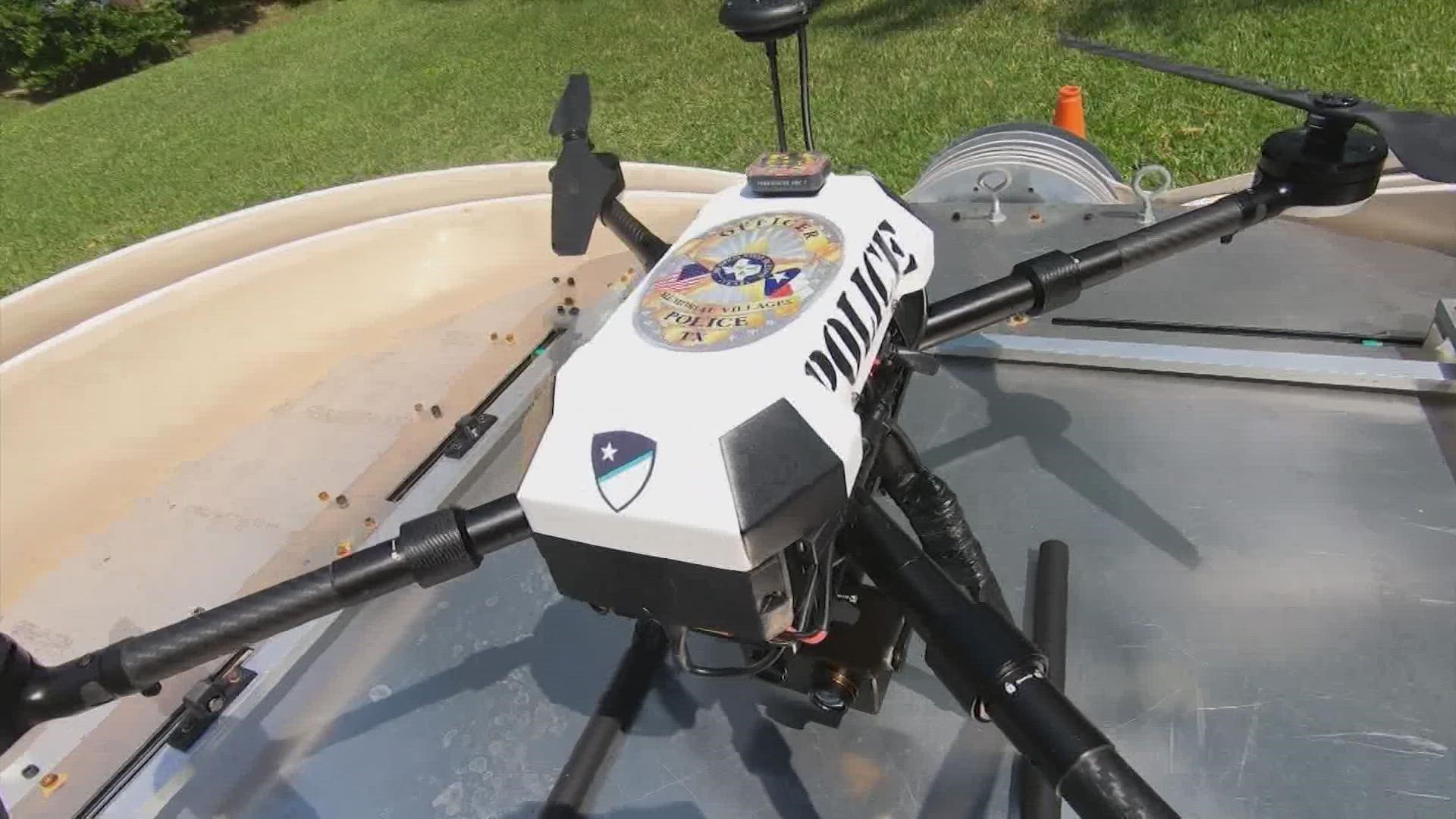HOUSTON — Nearly two dozen police agencies in the Greater Houston area are getting extra air support to fight crime — in the form of drones.
Many departments have been helping test the new technology to fine-tune its best uses. Some are calling it the “future of policing."
Memorial Villages Police Department is one of several agencies that are beta-testing drones for police work. The small aircraft can be operated off a laptop or a cell phone.
Larry Boggus is the drone officer for MVPD. He said he can either type in an address or simply drop a pin to dispatch the aircraft.
It flies at 26 miles an hour and has a range of about 25 miles.
So how have the extra eyes in the sky been helpful?
“We've had many calls of people on roofs. So, one instance might be like a school roof," Boggus said.
Larger agencies, like the Katy Police Department, may use drones in large commercial settings.
“At Katy Mills Mall where they are having catalytic converter thefts, now they can deploy off the roof and observe what's going on in the parking lot," Boggus said.
The airborne camera also assists officers with threats behind houses or in difficult terrain.
“We're able to send a drone to the bayou and see what’s going on if someone were to flee from us," Boggus said.
The drone even helps during hostage and barricaded suspect scenes.
Boggus uses FlightAware apps and thermal imaging to successfully operate his drone. He also has a mobile drone set up, which is operated from the trunk of an SUV.
Set up to launch time? Just 45 seconds.
MVPD Chief Ray Schultz points to big future goals, like having dispatchers, rather than dedicated flight officers to operate the drones.
“They can put the drone on the scene before the officer gets there,” Schultz said.
An even bigger goal? Using a caller’s cell phone to guide the drone.
“Anytime you make a cell phone call, that longitude and latitude are captured by 911. The goal is to push that information straight into the system. Even if you don't where you’re at, it’s going to go to where your phone is," Schultz said.
It’s a bird's eye view of what law enforcement may look like in the near future.

